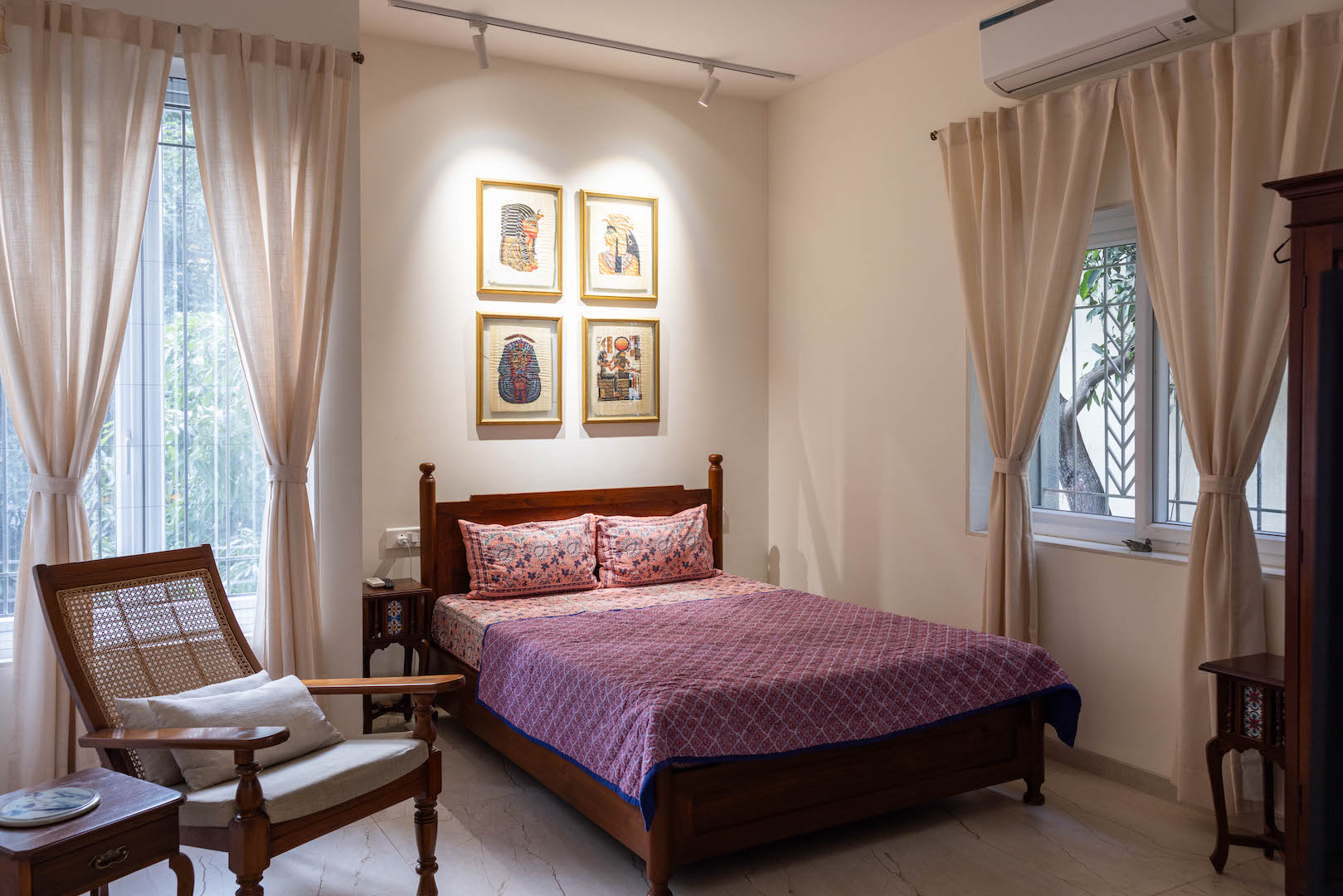As architects with a background in environmental natural resource management, our primary instinct is to conserve existing structures whenever possible. However, this approach isn’t always feasible due to the condition of the original buildings, limitations in structural systems and spans, and evolving family needs and lifestyles. These factors often necessitate rebuilding.
For this project, our clients lived in a 250 sq. m. bungalow on a 360 sq. m. plot in Tingre Nagar, Pune. Despite several extensions and renovations over the years, the bungalow’s structural limitations made it increasingly difficult to accommodate the growing family’s needs. Although we were committed to preserving parts of the old bungalow, a cost-benefit analysis indicated that a complete redevelopment would be more practical. The new design called for three separate apartments to maximize the Floor Space Index (FSI): one for the senior couple, one for their daughter, and one for their son.
The clients, a military family, desired spacious interiors reminiscent of traditional military housing. The design included a three-story building with a stilt parking area and two-bedroom apartments on each floor. The first floor was designated for the senior couple, the second floor for the daughter, and the third for the son. An internal connection between the first and second floors was included, with a shared kitchen on the lower floor. This configuration allowed for an office on the second floor, accessible from the common lobby and connected internally to the son’s third-floor bedroom via a compact staircase.
The site featured numerous mango and coconut trees in the setbacks. To protect the tree roots, we carefully planned the building’s edges and foundation. The northwest block was receded on the second floor to accommodate a leaning coconut tree.
The lower floor features a large living room designed to house the family’s antique teak furniture, with a covered terrace overlooking the street. This layout reflects the typical open-plan living and dining area of traditional military housing. The kitchen, separated from the dining area by a fixed glass partition, enhances the space’s functionality.
On the second floor, the living area and adjoining covered terrace provide privacy while accommodating the daughter’s piano and a large library unit. The master bedroom on this floor faces the street and includes a covered terrace that buffers the bedroom from street noise.
For the upper floor, the goal was to minimize street views. The son requested a small, open kitchen counter within the living space and a single open-to-sky terrace on the northwest corner, accessible from the master bedroom. The master bedroom also includes a connecting dresser and a staircase shaft leading to the office below the terrace.
The building’s structure and finishes are kept simple for ease of maintenance, with efficient planning that includes ample storage to reduce clutter. Skylights and windows at various levels brighten the interior spaces. Walls are designed to showcase artwork collected by the clients during their travels and postings. The result is a bright, airy, and welcoming home that meets diverse needs and integrates with its surroundings.
This house was built in a budget of 1.8 Cr


















